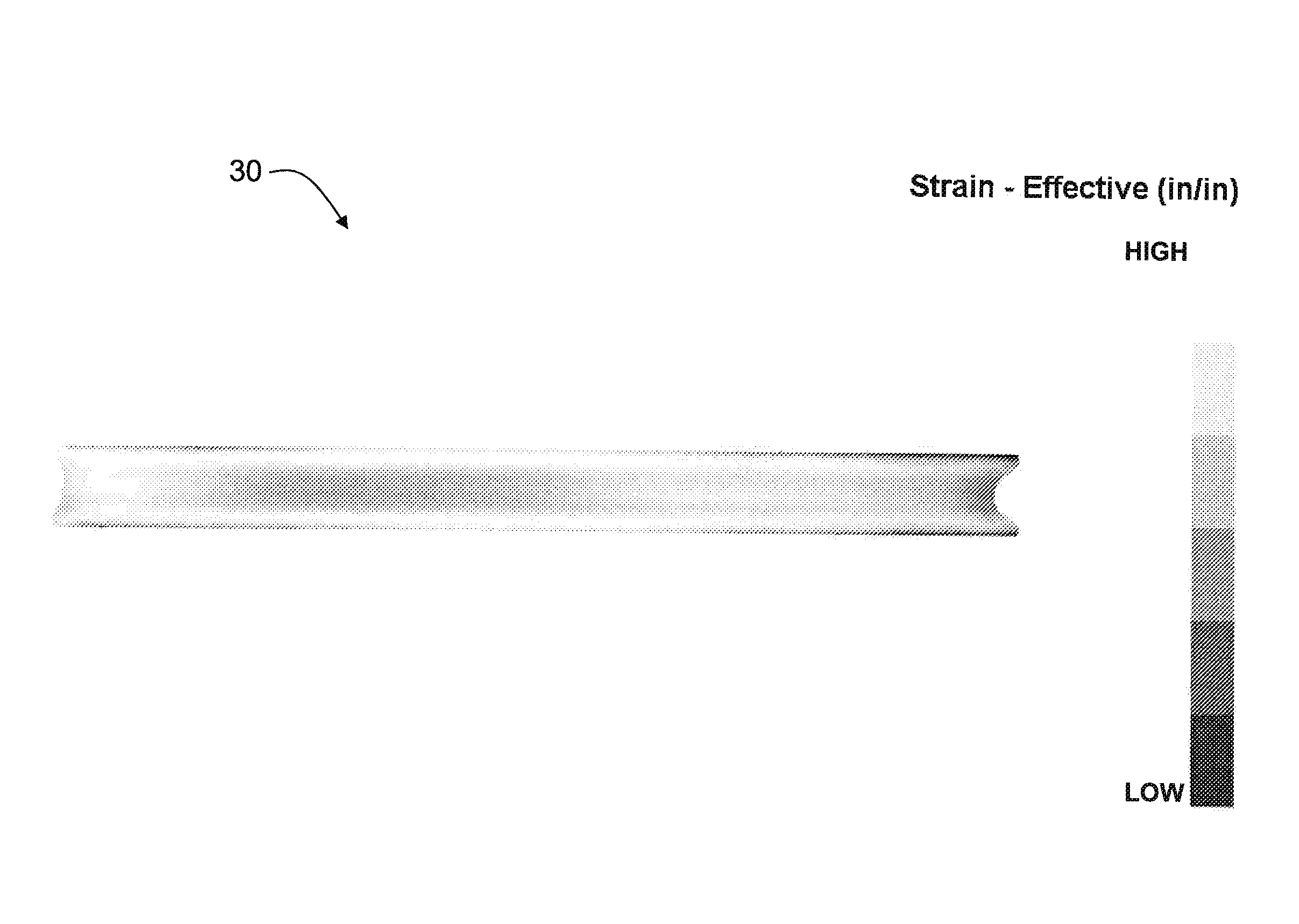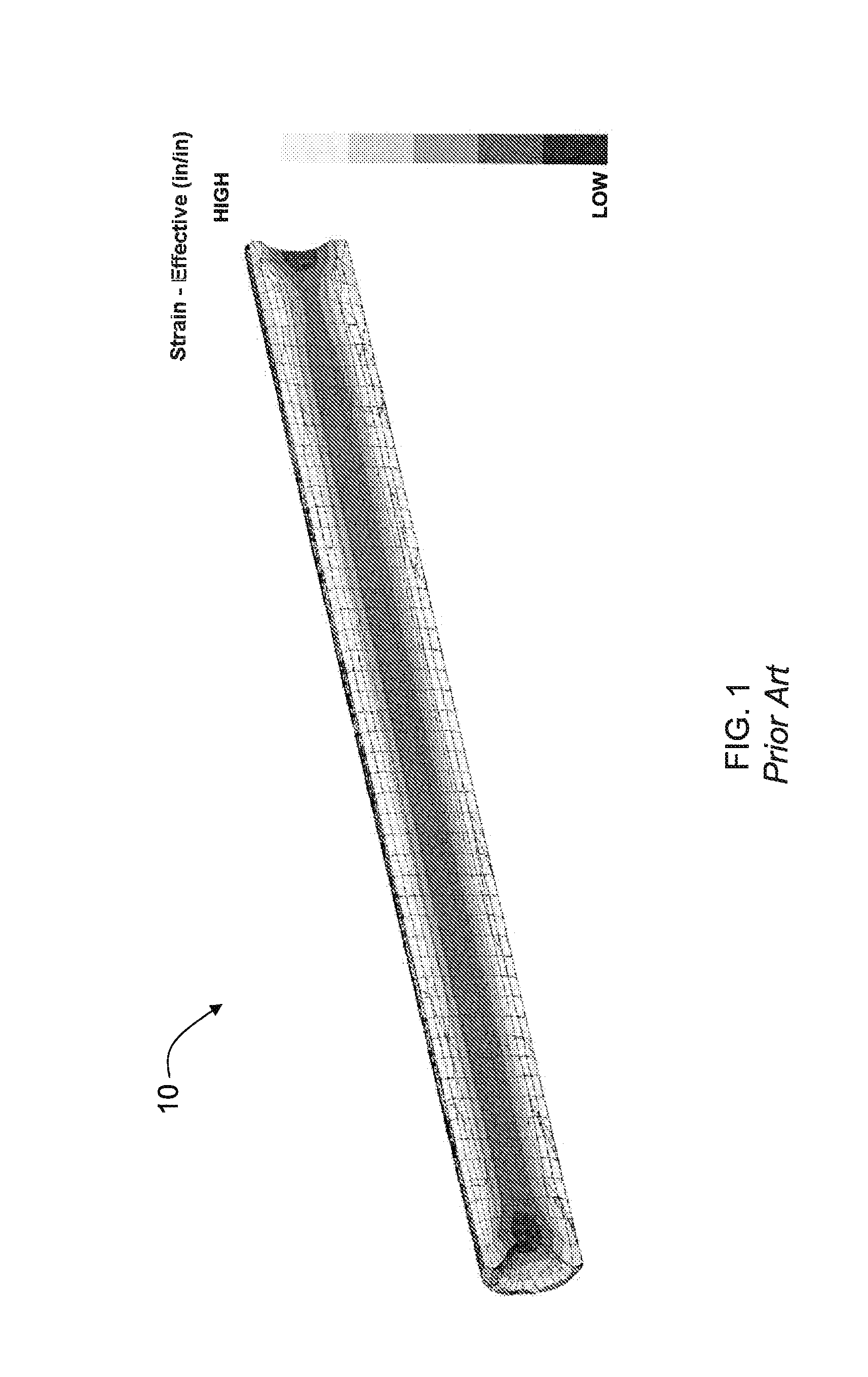Thermomechanical processing of high strength non-magnetic corrosion resistant material
a non-magnetic corrosion resistant material and thermomechanical technology, applied in manufacturing tools, forging/pressing/hammering apparatus, etc., can solve the problems of metal alloy parts used in chemical processing facilities that may be in contact with highly corrosive and/or erosive compounds, metal alloy parts that are subject to high stress, and promote corrosion and erosion
- Summary
- Abstract
- Description
- Claims
- Application Information
AI Technical Summary
Benefits of technology
Problems solved by technology
Method used
Image
Examples
example 1
[0094]FIG. 6 schematically illustrates aspects of a method 62 according to the present disclosure for processing a non-magnetic austenitic steel alloy (right side of FIG. 6) and a comparative method 60 (left side of FIG. 6). An electroslag remelted (ESR) ingot 64 having a diameter of 20 inches and having the chemistry of Heat Number 49FJ-1,2 shown in Table 2 below was prepared.
TABLE 2Element Heat 01FM-1Heat 47FJ-1, 2Heat 49FJ-2, 4C0.0140.0100.010Mn4.534.504.55Cr21.5022.2621.32Mo5.016.015.41Co2.652.602.01Fe34.1132.3739.57Nb0.0100.008Ni30.4030.0725.22W0.890.840.64N0.3650.3900.393P0.0150.0140.016S0.00020.0003Si0.300.230.30Cu1.131.221.21V0.030.040.04B0.0020.0020.002PREN16445047
[0095]The ESR ingot 64 was homogenized at 2225° F. for 48 hours, followed by ingot breakdown to about a 14-inch diameter workpiece 66 on a radial forge machine. The 14-inch diameter workpiece 66 was cut into a first workpiece 68 and a second workpiece 70 and processed as follows.
[0096]Samples of the 14-inch diamet...
PUM
| Property | Measurement | Unit |
|---|---|---|
| temperature | aaaaa | aaaaa |
| diameter | aaaaa | aaaaa |
| diameter | aaaaa | aaaaa |
Abstract
Description
Claims
Application Information
 Login to View More
Login to View More - R&D
- Intellectual Property
- Life Sciences
- Materials
- Tech Scout
- Unparalleled Data Quality
- Higher Quality Content
- 60% Fewer Hallucinations
Browse by: Latest US Patents, China's latest patents, Technical Efficacy Thesaurus, Application Domain, Technology Topic, Popular Technical Reports.
© 2025 PatSnap. All rights reserved.Legal|Privacy policy|Modern Slavery Act Transparency Statement|Sitemap|About US| Contact US: help@patsnap.com



